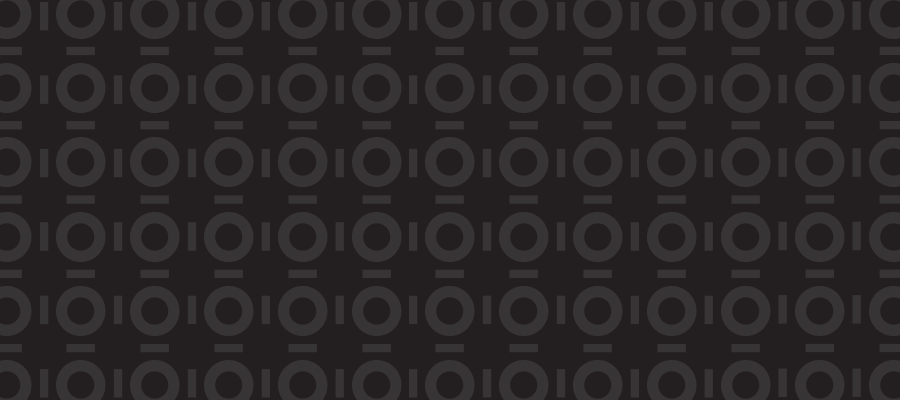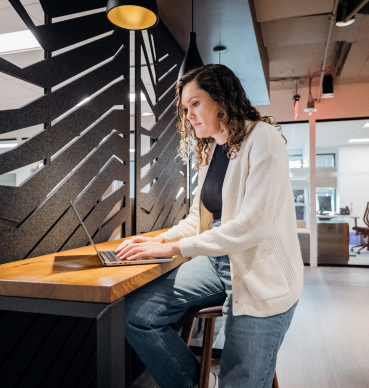At the onset of the U.S. coronavirus outbreak, event cancellations shaped the narrative — but people looked to surprising sources for information.
“Cancel everything.” That was the title of a March 10 piece in The Atlantic that argued the necessity of immediate social distancing to stop the coronavirus. The next day, a high-profile NBA player tested positive for the virus and the World Health Organization declared COVID-19 a pandemic.
Suddenly what seemed like a distant possibility was an all-too tangible reality. By the night of March 12, the country had responded by shutting down iconic parts of American life we always assumed would be there – everything from March Madness to Broadway shows to Major League Baseball. And the public stayed closely attuned — often turning to outlets with local or topical expertise.
Last week’s postponement of the Summer Olympic Games until 2021 marked just the latest major event disrupted by COVID-19.
A KIVVIT ANALYSIS OF U.S. READERSHIP AND SOCIAL MEDIA DATA AROUND MAJOR EVENT CANCELLATIONS FOUND THAT PEOPLE SOUGHT OUT LOCAL AND NICHE MEDIA OUTLETS AS THEY READ AND SHARED THIS NEWS.
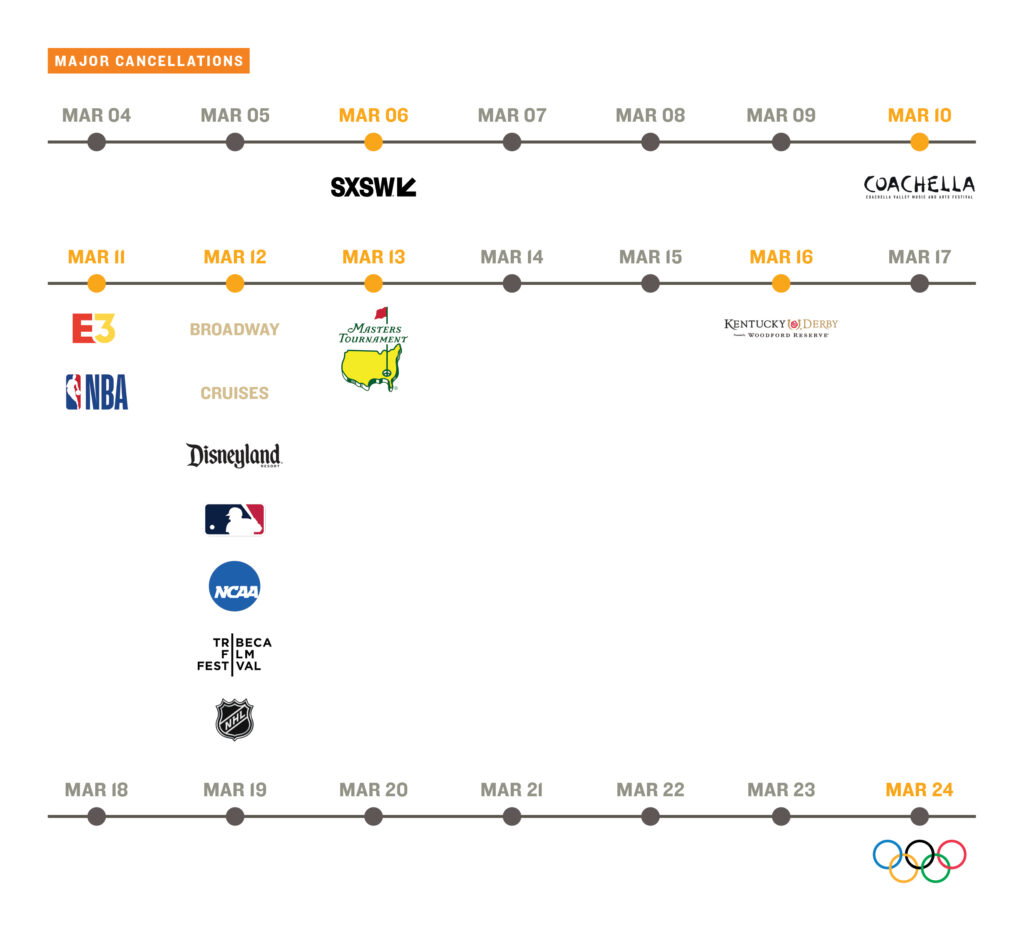
A CANCELLATION ONSLAUGHT
The wave of cancellations focused the nation’s attention on the termination of major events.
Since the beginning of March there have been over 114,000 news articles about cancellations in the U.S, 13 times more stories on the topic than during the same period time last year, based on data obtained from Newswhip. Social media users engaged accordingly, sharing news of cancellations across the internet.
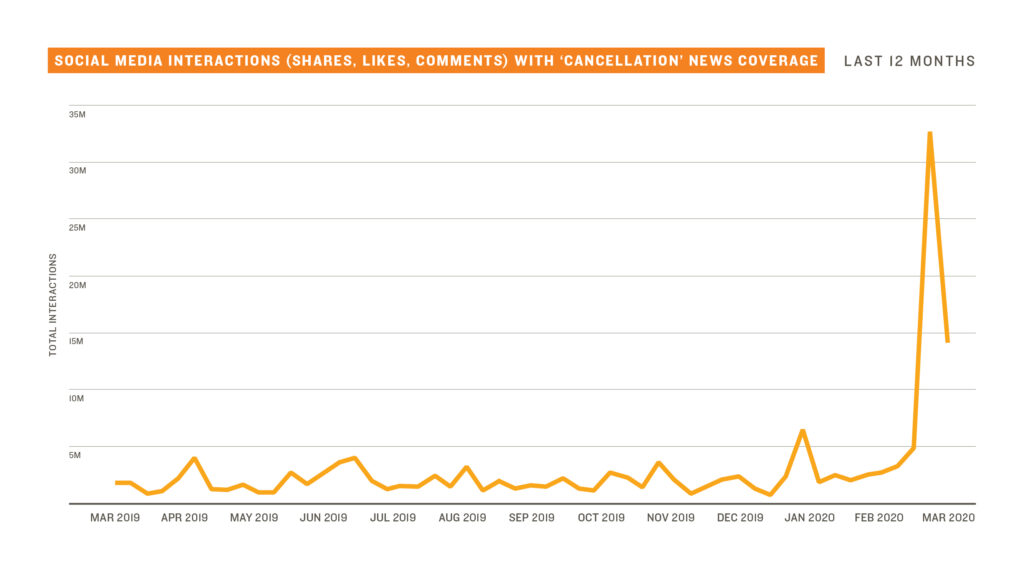
SUMMER OLYMPICS POSTPONEMENT DROVE THE MOST ATTENTION
Among the major events upended by COVID-19 in March, the Olympics being postponed and the NBA cancelling its season generated the most social media attention in the United States. Stories about the Kentucky Derby, March Madness, and South by Southwest followed.
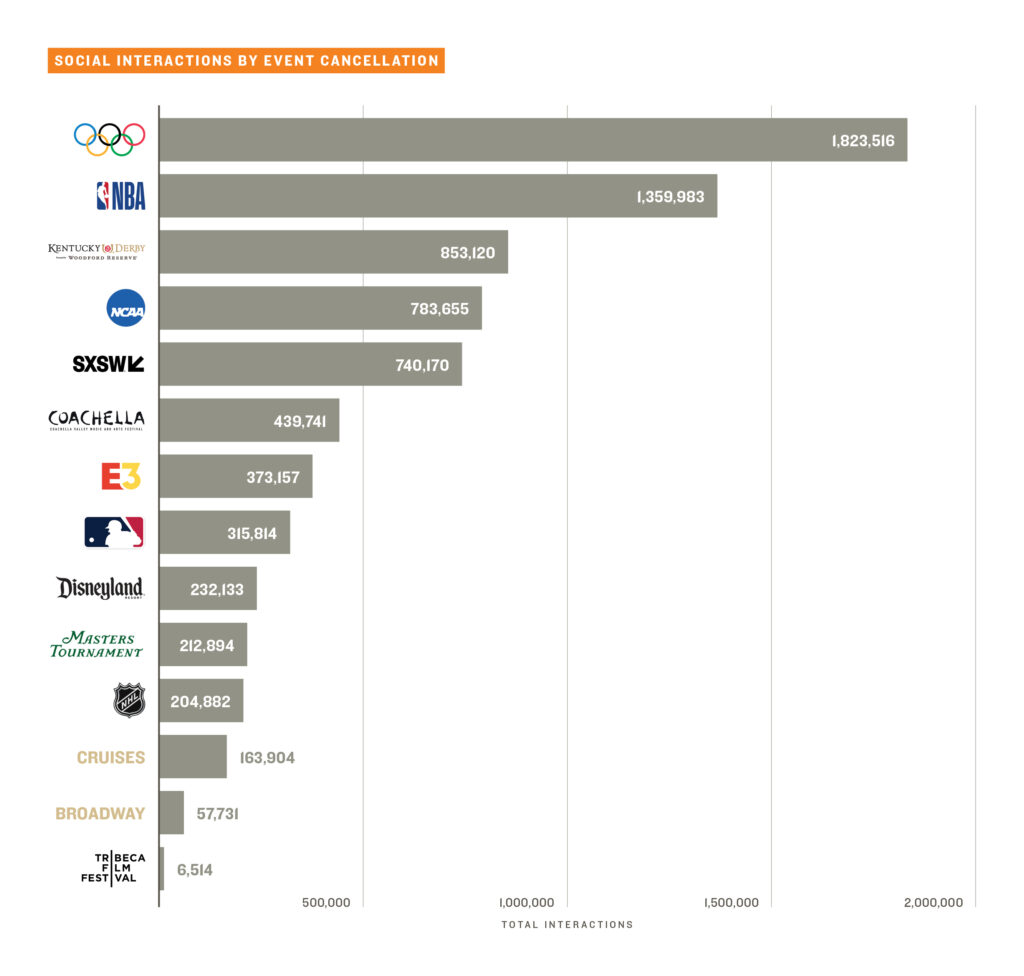
LOCAL/NICHE PUBLICATIONS GENERATING MORE SOCIAL MEDIA ATTENTION THAN NATIONAL OUTLETS
As news of cancellations took centerstage, a trend emerged that reveals how people are engaging with news during a time when everyday life is dramatically changing by the day.
Kivvit’s analysis found that cancellation coverage from local outlets and niche publications has consistently driven virality on social media, more so than the national mainstream outlets covering these events that you’d normally expect to command attention.

For example, when The Masters golf tournament was canceled, the story that ran on Augusta, Georgia, television station WJBF was shared 34,937 times, nearly double ESPN.com’s story.
Similarly, when South by Southwest was canceled, coverage from Austin’s KVUE was shared over 117,000 times, quadruple the number of times USA Today’s story was shared.
The trend of local and niche publications driving attention around major cancellations was consistent across industries and specific events.
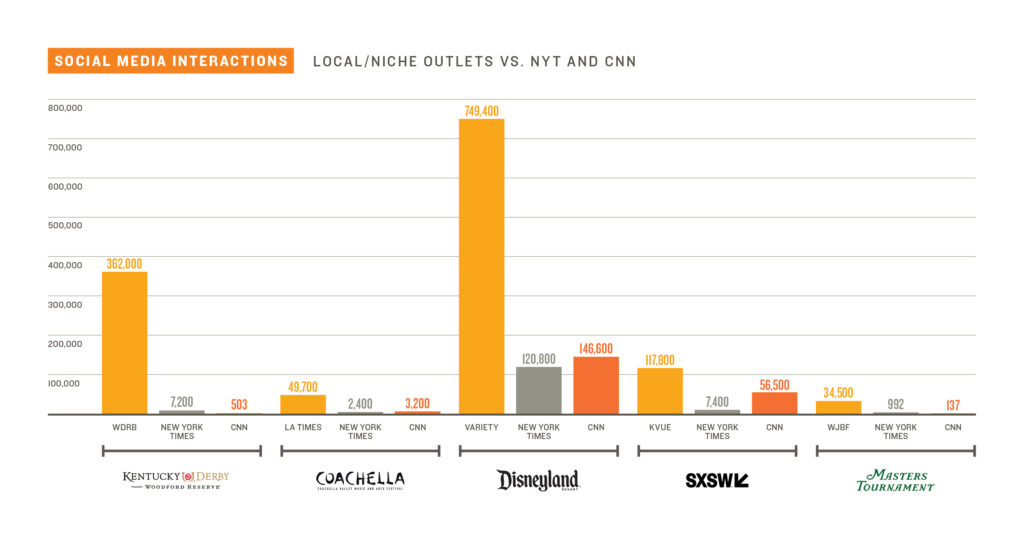
This trend often extended to readership as well, according to data obtained from Memo.
Local Louisville television station WDRB’s story about the Kentucky Derby’s cancellation received nine times more readers than the New York Times’ story.
Similarly, when Disneyland announced it would close, the story by Los Angeles–based entertainment publication Variety was read five times more than the Times’ article.
LOCALIZED IMPACTS OF COVID-19: AN OPENING FOR LOCAL AND NICHE NEWS?
The arrival of COVID-19 has stripped Americans of the things they would normally find respite in during times of stress or crisis. For many, the loss of the Masters or baseball, a sport that has been with us since the mid 19th century, proves its own sobering reality.
How people are engaging with news about these society-altering cancellations has underscored the crucial role that local and specialized outlets are playing in driving awareness and conversation online in the age of COVID-19.
Kivvit is seeing this media consumption trend broadly, as everything from school closures to shuttering of businesses localizes the impact of COVID-19 in acute ways. According to Advance Local, one of the largest local news publishers in the United States, their sites have seen a 66% increase in news readership in March and readers are spending 50% longer on articles that mention coronavirus in the headline.
While the business of local media has suffered in recent years, this trend shows how the local impacts of even a global issue like COVID-19 has created an opportunity for these outlets to drive readership and attention.
Garrett Jochnau is an Innovation Associate at Kivvit
